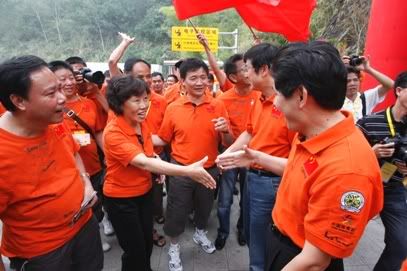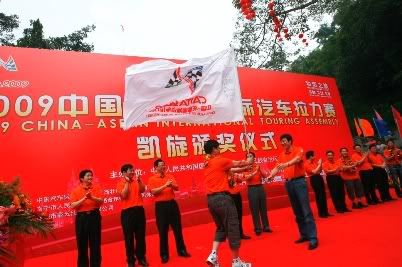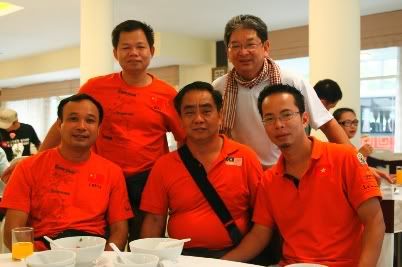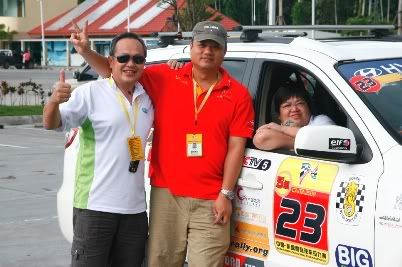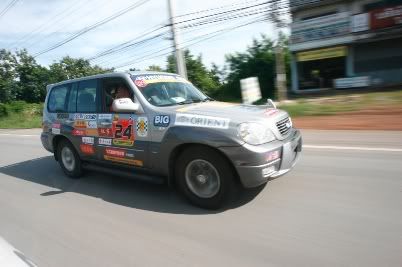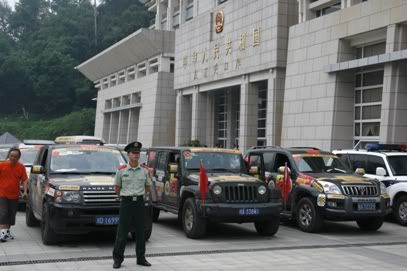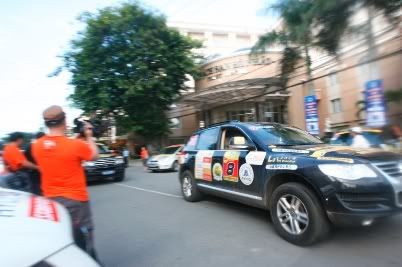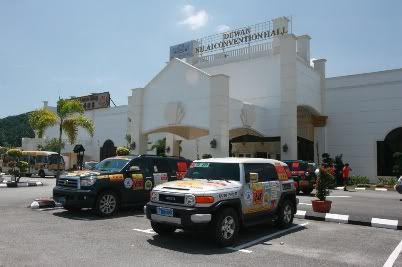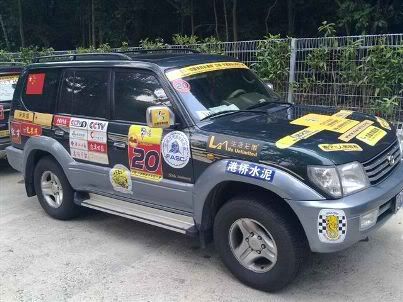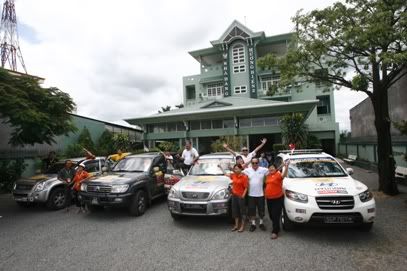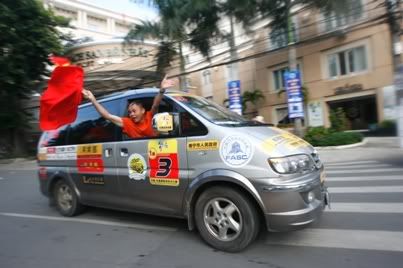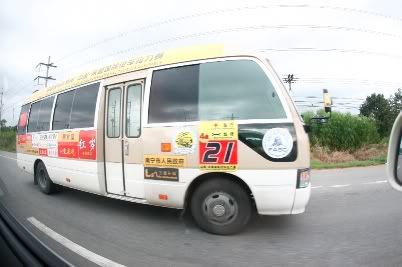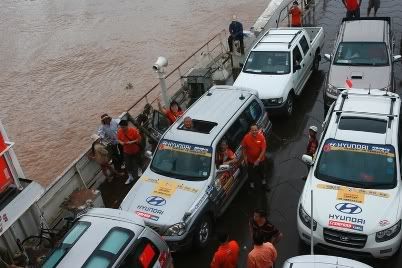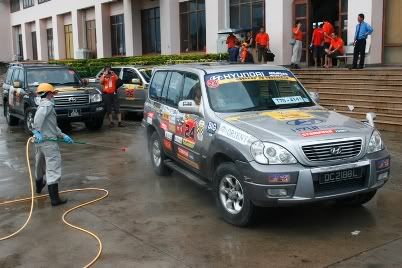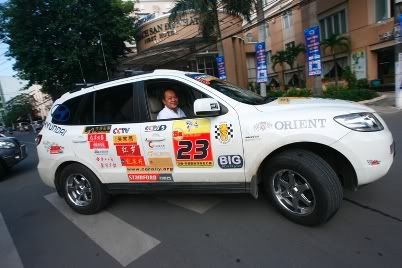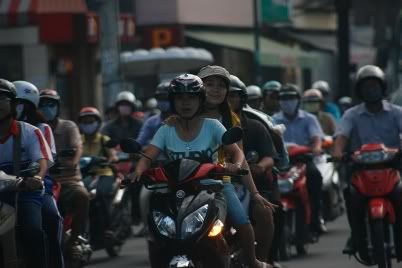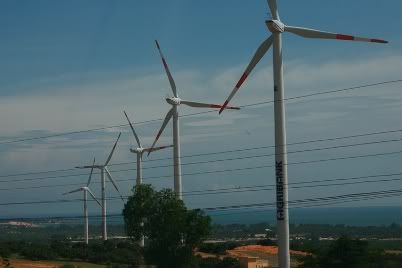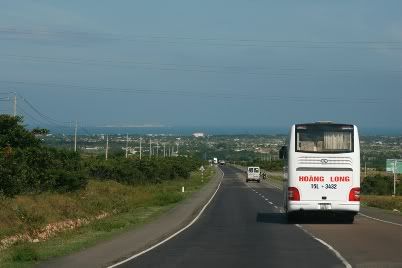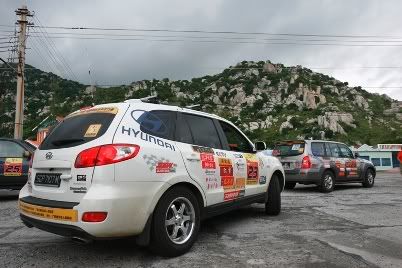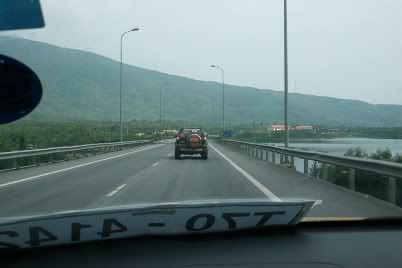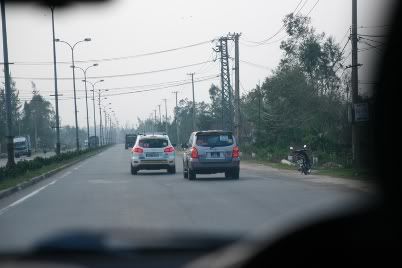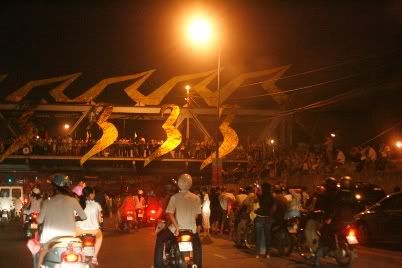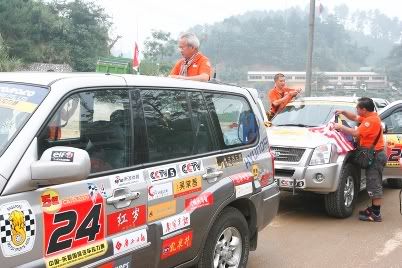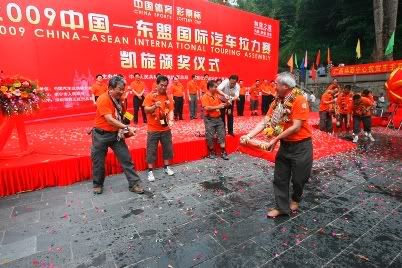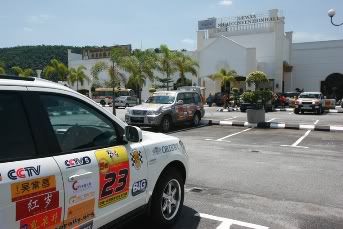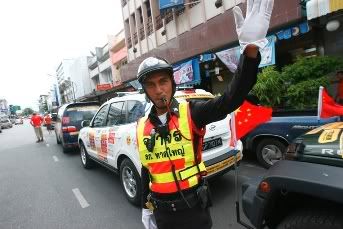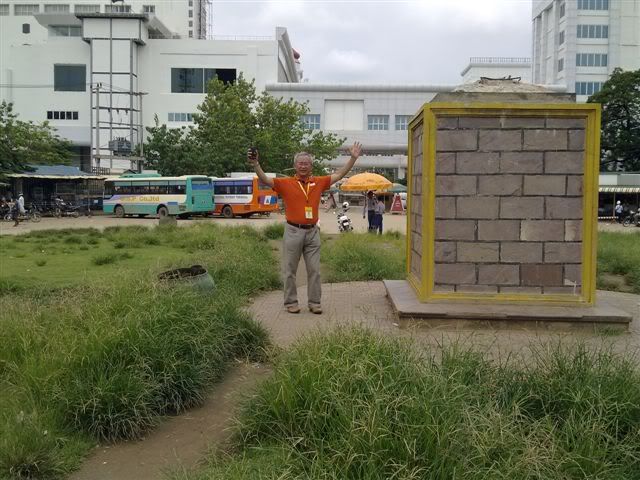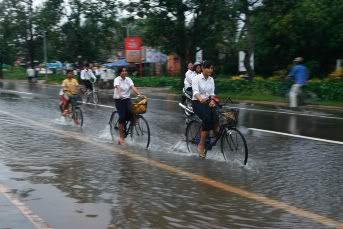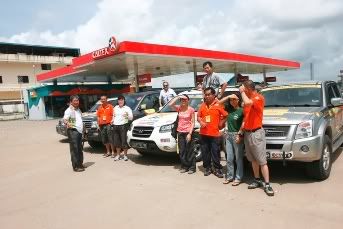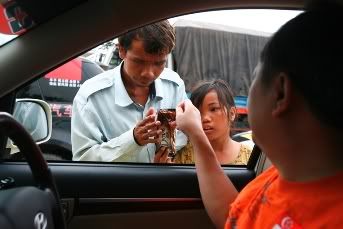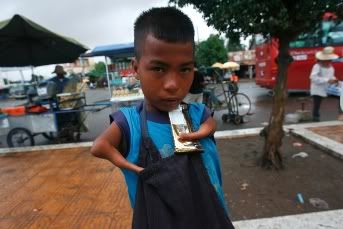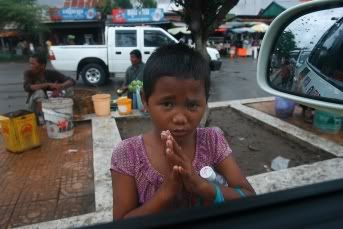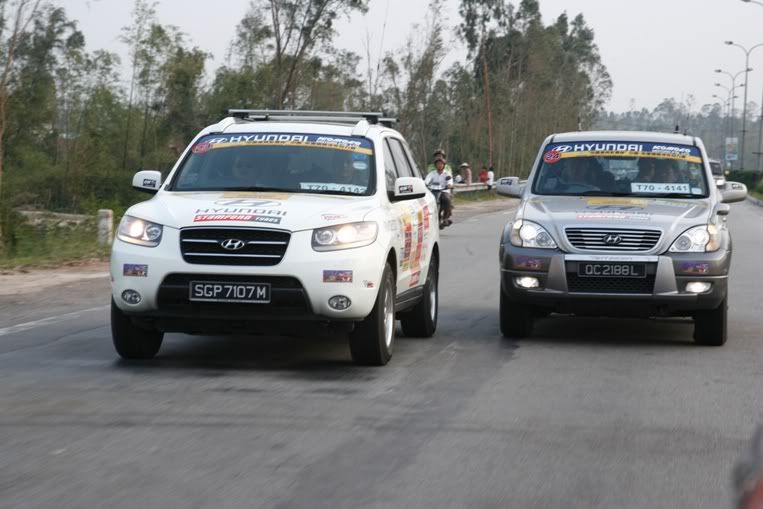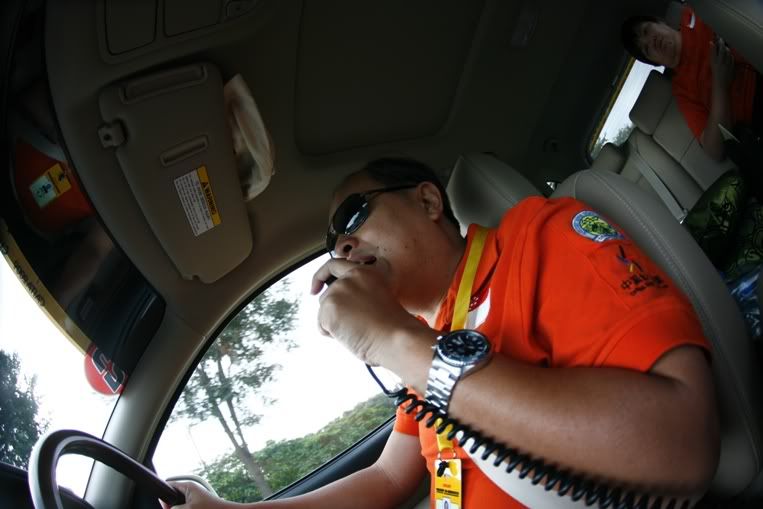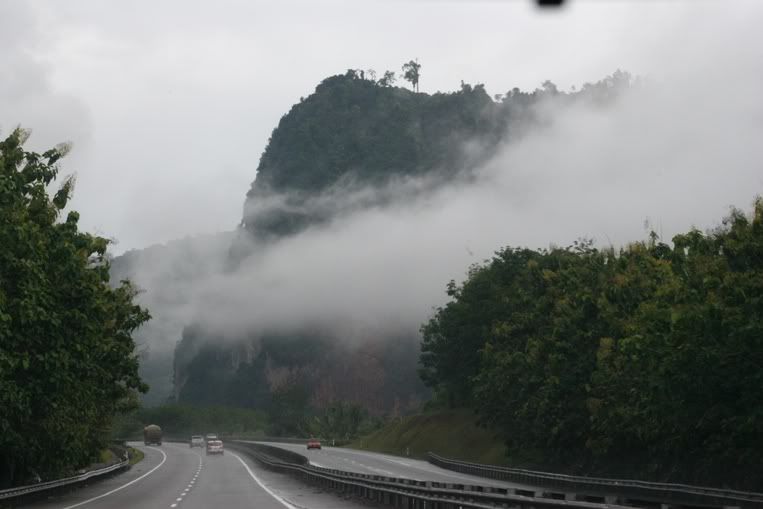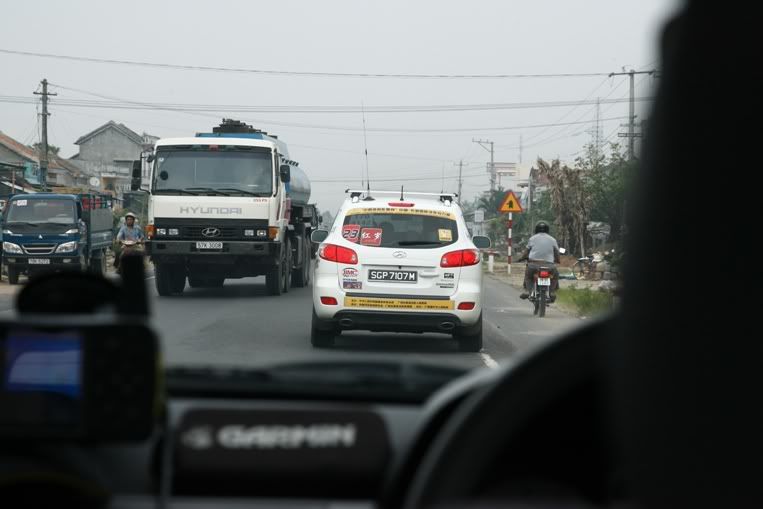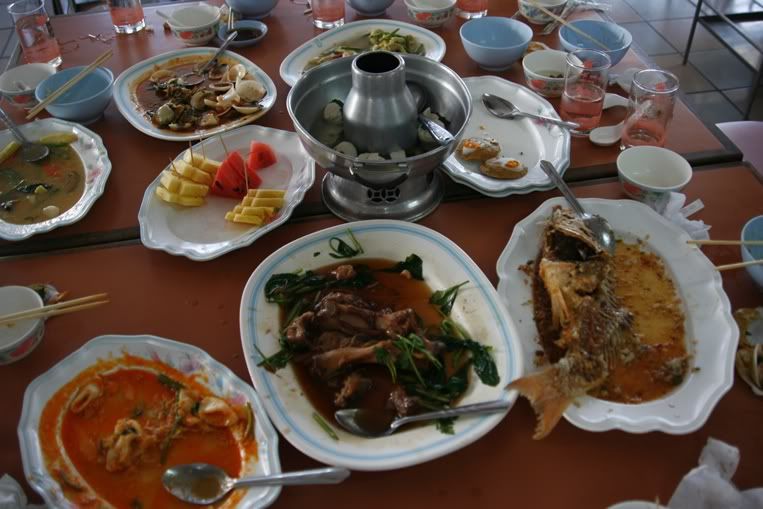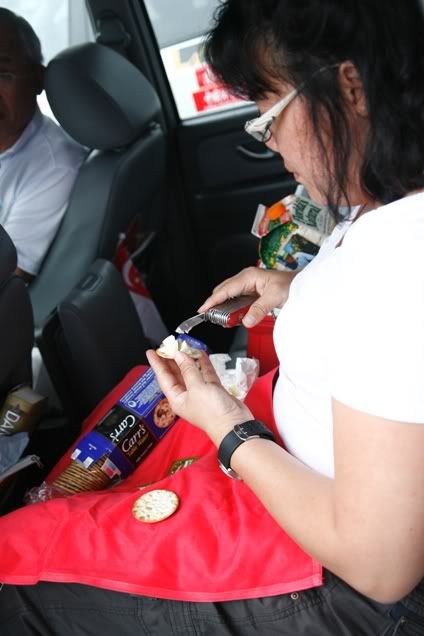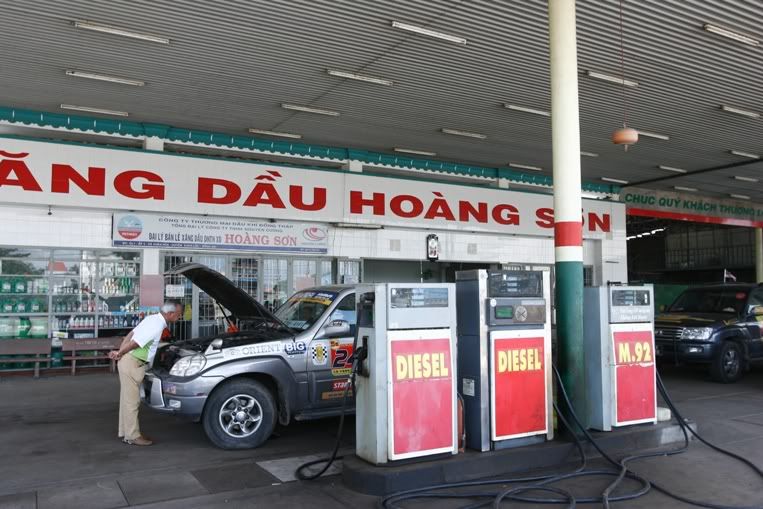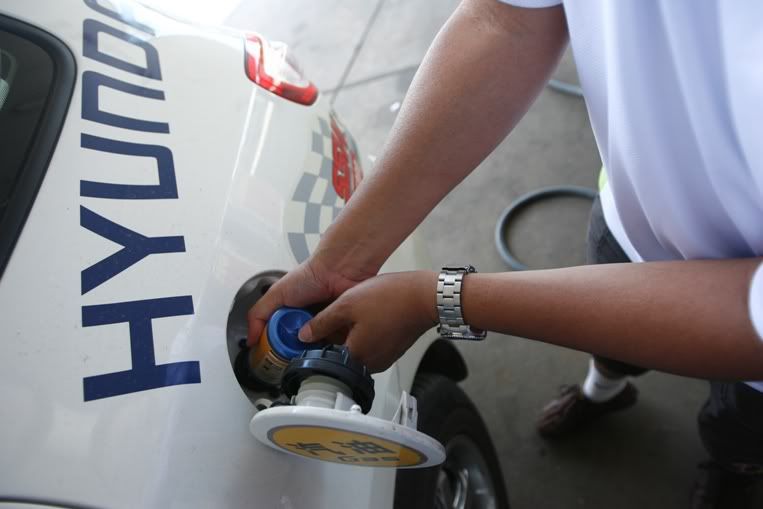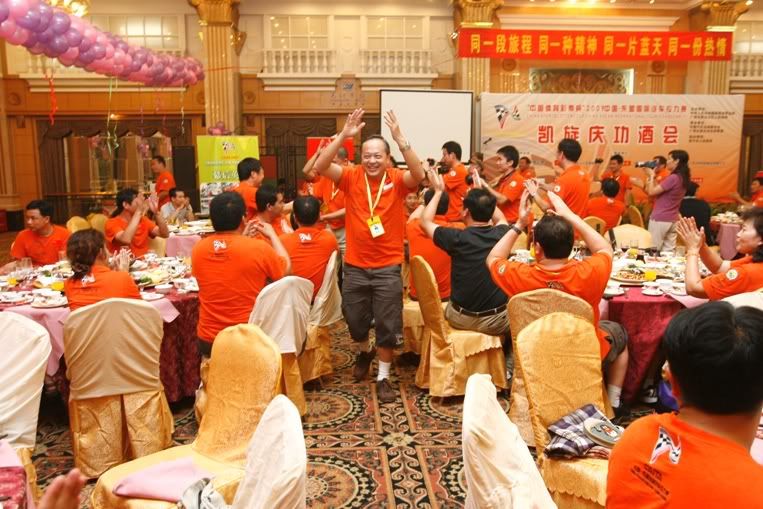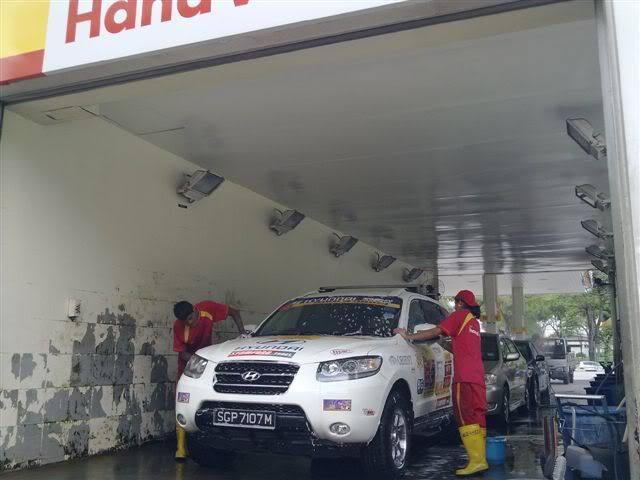The handing over of the event’s flag by Mr Cen Hankang, Director of the Organising Committee (Executing Office), signified the successful completion of CAITA 2009
Mr Thomas Ma (standing, left), Director of the event’s International Liaison Department, took good care of the Singapore and Malaysia teams during our entire journey. Mr Nguyen Duc Hieu (seated, left), a participant from Vietnam , almost single handedly negotiated for our entries when we had problems with the Vietnamese customs during previous CAITAs.
The all-important role of a commander for the main body CAITA 2009 was tasked by Mr Li Xiong who is seen here sharing a light moment with Lee Huey and me.
Lee Huey, 58, is the da-jie (big sister) of the Singapore team. She’s a school teacher by profession and her daily transport is a German engineered executive saloon. Driving above 100 km/h is a thing that she rarely does. Yet, in her attempt to keep up with the convoy during her driving stint, she tipped the speedometer at 160 km/h. This was in Thailand where the undulation and sweeping turns on certain stretches can be rather challenging. For her new found driving skill, Lee Huey gave credit to the steadfast road holding and the advantage of a raised ground clearance of the Hyundai Santa Fe – Car # 23.
The Hyundai Terracan, Car # 24, had the rare credential of completing the earlier CAITAs. This workhorse, under the capable hands of rally veteran William Lyou and Eddie Keng, completed a fine hat trick in 2009.
Other than the all-Hyundai outfit elected by Singapore team, the selection of vehicles in CAITA 2009 is best described as diversified. Car # 1 is a British made Range Rover; Car # 2 is Jeep Wrangler Rubicon from USA and Car # 4 is Toyota Prado from Japan .
Car # 8 VW Touareg is also an idea choice for such event.
This Ford S-Max, Car # 9, with the rear extended transmitting device is Mr Li Xiong’s command car.
Car # 13 is this Toyota Sequoia powered by V8 engine; Car # 14 is Toyota FJ Cruiser.
Car # 20 is another Toyota – a previous generation Land Cruiser.
The Malaysian team comprised of Car # 25 - a Land Cruiser (newer version) and Car # 26 - the latest Isuzu D-Max. They joined us for this friendly pose during a lunch location in Vietnam .
The working members of the Organising Committee were ferried in Car # 3 – a Chinese made MPV.
Lastly, members from the press and media were seated in either Car # 17, or ……
…Car (or Bus??) # 21. Both units are 18-seater Toyota Coasters.
